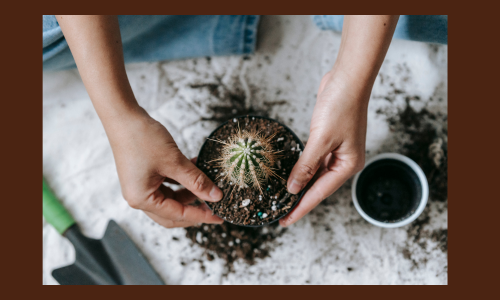Starting Your First Garden in Arizona: What New Growers Need to Know
- Deborah Munoz-Chacon
- Sep 1
- 4 min read

Gardening in Arizona isn’t about following instructions — it’s about figuring things out one sunrise at a time. If you’re just getting started, the dry air, cracked soil, and brutal sun might make you wonder why you even bothered. Totally normal. What no one tells you is that once you understand the patterns — where the shade hits, how the soil reacts after a good soak — it all starts to make sense. You don’t need to be an expert to grow something out here. You just need to pay attention and stop trying to do everything all at once.
Understanding Arizona’s Climate
The desert doesn’t care how eager you are — it will test everything you plant. What most new gardeners underestimate isn’t the heat itself but the extremes: wide temperature swings between day and night, long stretches without rain, and compact soil that barely holds moisture. Local wisdom says to treat your yard like a microclimate lab. Spend a week just observing where the sun hits and where the shadows fall. Don’t guess — track it. Morning shade matters more than you think. Once you treat climate not as a problem but as your design partner, the whole garden changes.
Soil Prep & Mulching
Desert soil looks like dirt but acts more like cement. Don’t bother planting anything until you’ve amended it — not with a shovel and hope, but with real organic matter. Compost, peat, and worm castings make a huge difference. And once that’s in, resist the urge to leave soil exposed. Cover everything with mulch. Mulching cools the surface, keeps roots from cooking, and cuts down on watering. Don’t skip it just because it feels like a finishing touch — it’s foundational.
Tracking Your Gardening Expenses
It’s easy to underestimate how much you’re spending until the receipts pile up in your glovebox or get tossed in the compost by mistake. Whether you're picking up mulch, tools, or seed packets, keeping track of those small purchases helps you stay within your budget — and repeat what worked last season. One simple trick? Use a free scanner app to snap a picture of each receipt with your phone and convert it into a clean PDF. You’ll have everything backed up, searchable, and ready when it’s time to tally up costs or plan your next planting round.
Watering Strategies
If you water a little every day, most of it will never reach the roots. It’s wasteful, shallow, and common. What your plants want is a long, deep soak followed by a pause. That rhythm teaches roots to stretch down, not cling to the surface. The trick is understanding how to water more effectively — not more frequently. Drip systems are great, but even a hose works if you let it run long enough to matter. And water in the early morning, not at night. Otherwise, you’re inviting mold and using water when the plants aren’t ready to drink.
Choosing Resilient Plants
This isn’t the place to baby delicate perennials or try to impress your neighbors with a temperamental herb garden. Start with survivors. The kind of plants that shrug off heat and bounce back from missed waterings. Picking plants that can handle heat is less about lowering your standards and more about learning what beauty looks like here. Think texture, movement, and color that doesn’t fade under pressure. Lavender, salvia, penstemon, and desert marigold don’t just live in Arizona — they show off. Build your confidence with them before branching out.
Low-Water Design Principles
If you build your garden around plants that need constant attention, you’ll resent it by July. That’s why xeriscaping is more than a trend — it’s a strategy. Water-smart landscaping helps you plan with intention, not panic. Group your thirstiest plants near each other. Place natives where they’ll thrive without intervention. And consider hardscapes — like gravel paths or raised beds — that reduce maintenance without sacrificing beauty. Water is a resource here. Spend it wisely.
Common Beginner Mistakes to Avoid
Every new gardener makes a few wrong moves, but some are easier to prevent than fix. Overwatering in clay soil. Buying everything at once. Ignoring the shade map. It’s normal to guess wrong at first — just don’t double down. Learning to slow down, observe, and adjust is part of the process. You’re not failing when a plant dies. You’re failing when you stop noticing why.
No one nails it in their first season. You’ll forget to water, plant something too early, maybe fry a few seedlings. It happens to everyone. But one day, you’ll walk outside, spot something blooming that wasn’t there the day before — and suddenly it’ll feel worth it. You’ll get better at this just by doing it. That’s the whole point. A desert garden doesn’t reward perfection — it rewards people who stick around and keep trying.
Discover how Sonoran Oasis Landscaping can transform your outdoor space into a stunning oasis. Explore our expert services today!
Guest Blogger
John Dunbar









Comments